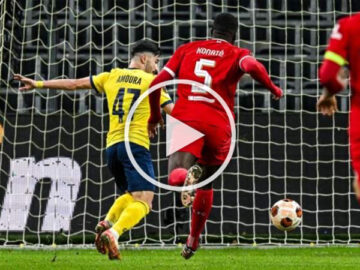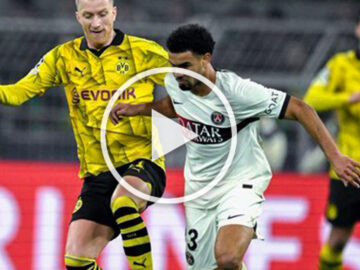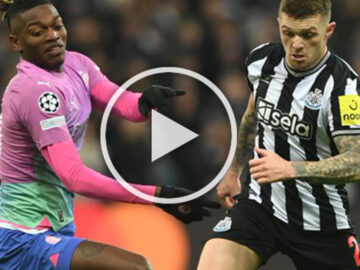Cодержание
- Stop Looking For A Quick Fix Learn To Trade The Right Way
- Chart Your Way To Profits: The Online Trader’s Guide To Technical Analysis With Prophetcharts, Second Edition By
- Simple Cup And Handle Trading Strategies
- Cup With Handle
- Explore The Markets With Our Free Course
- What Is The Cup And Handle Pattern?
If you traded this without a stop, the net gain climbed to 90%. Of the stocks I looked at, I found 69 trades with 43% of them winning. Expectancy was $9.62 per share, ranking 15th where 1 is best. The figure illustrates Balance of trade the idea for trading pattern pairs, where price is the red line and the boxes are chart patterns. Continuation patterns indicate that there is a greater probability of the continuation of a trend than a trend reversal..
The reasoning behind this explanation is that the breakout move requires strong volume after the necessary quiet period to form both the cup and the handle. You can’t find a more quite time to trade the markets than late afternoon when everyone is off at lunch or have finished trading for the day. The cup and handle is one of the easiest chart patterns to identify, because we all can recognize a cup. Some of us may not be rocket scientists; however, everyone I know has used a cup in their lifetime.
This is because there is not sufficient momentum to fuel a breakout and bullish trend. Nevertheless, the cup and handle pattern is simple, reliable and quite profitable. We hope that this candlestick pattern will take a worthy place in your toolkit for trading.
Stop Looking For A Quick Fix Learn To Trade The Right Way
In the diagram below, I illustrate the 2 different types of cup and handle patterns. The confirmation will come from the “handle” part of the price pattern, which is like a small pullback before the price explodes upwards. You can think of it as pushing down on a loaded spring, to build up more pressure just before the release. The cup and handle is an accumulation buying pattern, which is found during long periods of consolidation, and can lead to powerful explosive moves once the pattern is fully completed.
The confirmation of the pattern comes when the price action breaks the channel of the handle in the bearish direction. The first target of the pattern equals to the size of the bearish channel around the handle, applied downwards starting from the moment of the breakout. The second target equals to the size of the cup, applied downwards starting from the moment of the breakout. An ‘inverted cup and handle’ is a chart pattern that indicates bearish continuation, triggering a sell signal. Wynn Resorts, Limited went public on the Nasdaq exchange near $11.50 in October 2002 and rose to $164.48 five years later. The subsequent decline ended within two points of the initial public offering price, far exceeding O’Neil’s requirement for a shallow cup high in the prior trend.
You might observe a steady, daily drop in volume that could potentially indicate the end of the handle’s formation is near. Inverted cup and handle patterns can be identified by their large crescent shape followed by a less extreme, upward retracement. The entire pattern usually takes within 3 to 6 month to develop. These patterns are meant to serve as being indicative of a bearish reversal. When a Cup and Handle occurs within an uptrend, it’s very similar to the reversal setup.
Chart Your Way To Profits: The Online Trader’s Guide To Technical Analysis With Prophetcharts, Second Edition By
Measure the distance between the bottom of the cup and the break of the handle . Place your stop loss by your risk management tolerance and trading plan. Table 6 shows the results sorted by the type of patterns involved (busted or non-busted). For example, if you buy a cup and sell the first non-busted chart pattern which comes along, you’d make 30% on average. This compares to a 20% annualized gain if you sell a designated pattern . I compared the performance of selling busted and non-busted patterns in 22 contests .
- This is a bearish pattern and it looks different to the traditional cup and handle.
- A rise in price takes place as buying interest and strength increase .
- Alan received his bachelor’s in psychology from the University of Pittsburgh and is the author of The Master Swing Trader.
The price will likely continue in that direction though conservative traders may look for additional confirmation. The target can be estimated using the technique of measuring the distance from the right peak of the cup to the bottom of the cup and extending it in the direction of the breakout. A common stop level is just outside the handle on the opposite side of the breakout. The Inverted Cup and Handle is the bearish version that can form after a downtrend. TradingView has a smart drawing tool that allows users to visually identify this pattern on a chart.
Simple Cup And Handle Trading Strategies
Most brokers measure the length between the highest point of the resistance and the lowest level of the cup. At that point, the cup of the pattern was completed and the handle was about to begin. The pricing of the handle remained within the upper portion of the cup, so all of the necessary ingredients were present for a bullish breakout.
The bullish Cup and Handle pattern is the one we have been discussing so far. It starts with a bearish price move, which gradually reverses. The new bullish move finishes approximately around the top of the prior bearish move.
The price may drop slightly, then rally back up, forming another handle or breaking above the initial handle. There is also an upside-down cup and handle pattern, called the inverted or reverse cup and handle. This is a bearish pattern and it looks different foreign exchange market to the traditional cup and handle. Now let’s demonstrate the bullish and the bearish Cup and Handle strategy in action. The examples below will help clear out any questions you may have related to trading the Cup and Handle pattern in Forex.
In the final leg of the pattern, the stock exceeds these resistance levels, soaring 50% above the previous high. Technical traders using this indicator should place a stop buy order slightly above the upper trendline of the handle part of the pattern. The risk reward on cup and handle formation both reversal and continuation Cup and Handle patterns makes the pattern a very attractive setup. It’s necessary to calculate the average arithmetic mean for the high and low of the handle the same way. Next, it’s necessary to compare the two values that are obtained.
A cup and handle pattern is formed when there is a price rise followed by a fall. The price rallies back to the point where the fall started, which creates a “U” or cup shape. The price then forms the handle, which is a small trading range that should be less than one third of the size of the cup.
Cup With Handle
72% of retail investor accounts lose money when spread betting and/or trading CFDs with this provider. You should consider whether you understand how spread bets and CFDs work and whether you can afford to take the high risk of losing your money. A renewed interest in the stock comes about, completed by a breakout above resistance . We recommend that you combine it with other tools like Fibonacci and indicators like moving averages. After the market has retracted into the 30–50% zone, look for a rally to begin pressing prices back toward the old high.
Explore The Markets With Our Free Course
The subsequent recovery wave reached the prior high in 2011, nearly 10 years after the first print. First of all, the cup and handle is the trend continuation pattern only. This pattern was introduced and popularized by William O’Neill, a famous American trader of the Forex and stock market. The pattern resembles a cup of coffee or tea, which, for sure, is present near the keyboard of each trader. In a bull market, many of the Morpheusdaily stock picks are based on the cup and handle chart pattern. For example, buying a cup with an upward breakout in a bull market and selling a busted broadening bottom shows winning trades making an average of 168%.
Showing reslienced and resumed market leadership, NVDA stock has rebounded from a sell-off that began in October 2018 and is now back to trading near an all-time high. The buy point is based on the most recent area of resistance (i.e., the peak in the handle) because it’s a testing ground. Can the stock punch decisively through that resistance in heavy volume? If it does, it’s a sign of strength, and a sign that large investors are buying aggressively and therefore pushing the stock higher. From IBM in 1926 and Walmart in 1980 to Nvidia in 2016 and again in 2020, countless big winners have made large gains from a cup with handle in every market cycle for decades.
A trailing stop-loss may also be used to get out of a position that moves close to the target but then starts to drop again. Draw the extension tool from the cup low to the high on the cup’s right, and then connect it down to the handle low. It should not drop into the lower half of the cup, and ideally, it should stay in the upper third.
What Is The Cup And Handle Pattern?
This is the point at which the pivot forms, and marks the end of the recovery stage. Fiduciary As can be seen in the picture above, the handle is the correction of the price to the right side of the cup. The cup and handle pattern is a common method you can use to analyse the trend of assets.
A positive feedback loop sets into motion, with price lifting into resistance, completing the final leg of the pattern, and breaking out in a strong uptrend. The cup and handle is one of many chart patterns that traders can use to guide their strategy. An ascending triangle is a chart pattern used in technical analysis created by a horizontal and rising trendline. The pattern is considered a continuation pattern, with the breakout from the pattern typically occurring in the direction of the overall trend.
A rise in price takes place as buying interest and strength increase . An equilibrium is created between buyers and sellers as the price stabilizes . Also, you can see that the lower part of the up happened when the price reached a 50% Fibonacci Retracement level. fibonacci sequence This is a bullish pattern that was developed by William O’Neill, who wrote about it in a book he published in 1988. In the market where false signals are readily available, you can essentially use the Ichimoku Cloud to ignore signals, which lack conviction.
The last time I checked, simply drawing a line up in the air means absolutely squat. On a 5-minute time frame, the handle is made up of at least 4 candlesticks but no more than 10. The reason I like to time box the handle, is because I want to avoid the scenario of being trapped in a sideways conundrum.
This pullback is then met with bullish activity, which causes the rounded bottom and rise of the right side of the cup. Shares and stock indices with lots of upward momentum prior to the cup and handle forming tend to produce the most favourable cup and handle patterns for trading. In this case, traders may focus on stocks or indexes that saw strong percentage advances heading into the cup and handle pattern.
Author: Korrena Bailie




